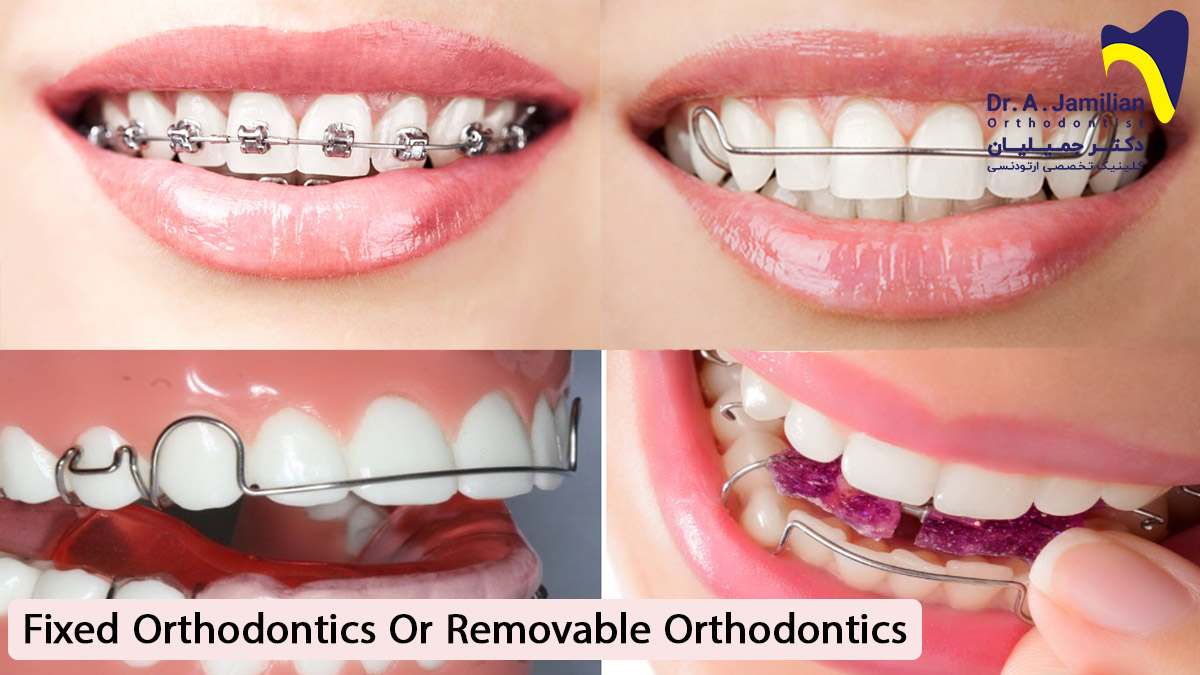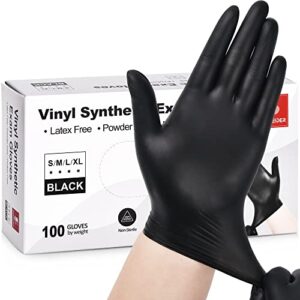Contents
- 1. Types of Orthodontic Fixed Appliances
- 2. Benefits of Orthodontic Fixed Appliances
- 3. Eligibility for Orthodontic Treatment
- 4. Procedure for Getting Orthodontic Fixed Appliances
- 5. Maintenance and Care Tips for Orthodontic Fixed Appliances
- 6. Potential Discomfort and Side Effects
- 7. Financial Considerations and Insurance Coverage
- 8. Potential Risks and Complications
- 9. Orthodontic Aftercare
- 10. Frequently Asked Questions (FAQs)
If you’re considering orthodontic treatment, it’s important to understand the ins and outs of orthodontic fixed appliances. Also known as braces, these devices are used to correct misaligned teeth and jaw issues. From how they work to the different types available, this article will provide you with all the essential information you need to know about orthodontic fixed appliances. So, whether you’re just beginning your research or already on your orthodontic journey, read on to discover everything you need to know about these transformative dental tools.
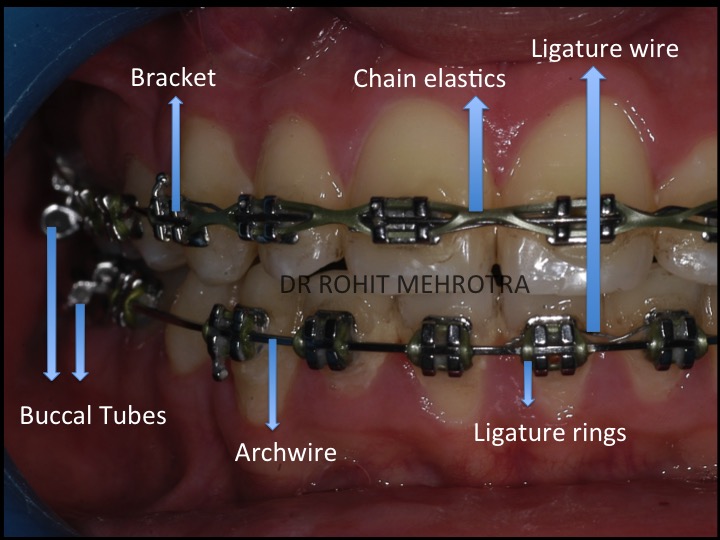
1. Types of Orthodontic Fixed Appliances
1.1 Traditional Braces
Traditional braces are the most common type of orthodontic fixed appliances. They consist of metal brackets that are bonded to the teeth using a dental adhesive. These brackets are then connected with wires and elastic bands, which apply gentle pressure to gradually move the teeth into the desired position. Traditional braces are highly effective in correcting various orthodontic issues, such as overcrowding, spacing, and misalignment.
1.2 Ceramic Braces
Ceramic braces are similar to traditional braces in terms of structure and function, but they are made from tooth-colored or clear ceramic materials. This makes them less noticeable compared to metal braces, making them a popular choice for individuals who desire a more aesthetically pleasing option. Ceramic braces are especially suitable for those concerned about the appearance of metal brackets, but it’s important to note that they may be more prone to staining and require extra care to maintain their translucency.
1.3 Lingual Braces
Lingual braces are a discreet orthodontic treatment option as they are placed behind the teeth, making them virtually invisible from the front. These braces are custom-made to fit the individual patient’s teeth, with the brackets and wires designed to match the contours of the back of the teeth. While lingual braces offer aesthetic benefits, they may take some time to adjust to and require meticulous oral hygiene practices.
1.4 Self-Ligating Braces
Self-ligating braces are similar in appearance to traditional braces but differ in the way the wires are held in place. Instead of elastic bands or metal ties, self-ligating braces use a built-in mechanism to secure the wires. This design allows the teeth to move more freely and reduces the friction between the brackets and wires, leading to potentially faster treatment times and fewer scheduled appointments for adjustments. Self-ligating braces also offer easier maintenance and improved oral hygiene compared to traditional braces.
1.5 Clear Aligners
Clear aligners are a popular alternative to traditional braces, especially for adults or individuals who prefer a more discreet option. These orthodontic appliances are made of clear plastic and are custom-designed using advanced computer software. Clear aligners work by gradually shifting the teeth into the desired position, utilizing a series of aligners that are worn for a specified period before moving on to the next set. They are removable, making oral hygiene easier, and allowing individuals to maintain their regular eating habits without restrictions.
2. Benefits of Orthodontic Fixed Appliances
2.1 Improved Aesthetics
Orthodontic fixed appliances offer significant aesthetic benefits. Traditional braces have evolved to become more discreet, utilizing ceramic or lingual options that are less visible. Clear aligners, on the other hand, offer a virtually invisible treatment option. By aligning the teeth and improving their positioning, orthodontic treatment can greatly enhance your smile and boost your confidence.
2.2 Enhanced Oral Health
Orthodontic treatment not only aims to improve the appearance of your teeth but also promotes better oral health. Misaligned teeth can create tight spaces and overlapping, making it difficult to clean the teeth properly. By correcting these misalignments, orthodontic treatment helps prevent tooth decay, gum disease, and other dental issues associated with poor oral hygiene.
2.3 Better Chewing and Speaking
Orthodontic fixed appliances help align your bite, allowing for proper chewing and improved digestion. When the teeth are properly aligned, they work together more efficiently, reducing the risk of excessive wear and tear on certain teeth. Additionally, corrected alignment can also improve speech by eliminating issues such as lisping or difficulty pronouncing certain sounds.
2.4 Reduced Risk of Injuries
Orthodontic treatment can help prevent dental injuries, particularly in cases of protruding or misaligned teeth. By aligning the teeth and correcting bite issues, the risk of trauma to the teeth and soft tissues of the mouth is significantly reduced. This is especially important for individuals who participate in contact sports or have a history of accidental falls or injuries.
2.5 Proper Teeth Alignment
Proper teeth alignment plays a crucial role in maintaining overall oral health. When the teeth are aligned, they distribute the forces of chewing evenly across the entire dentition, reducing the risk of abnormal wear, loss of tooth structure, and TMJ (temporomandibular joint) disorders. Orthodontic fixed appliances help achieve the ideal alignment, ensuring long-term dental health and stability.
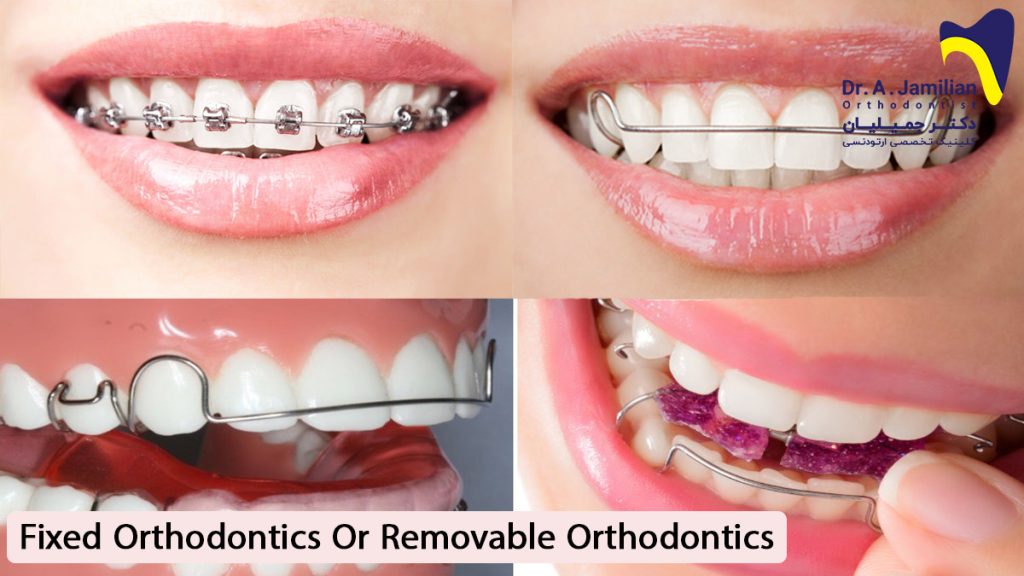
3. Eligibility for Orthodontic Treatment
3.1 Assessment by an Orthodontist
To determine eligibility for orthodontic treatment, an initial assessment by an orthodontist is necessary. The orthodontist will conduct a thorough evaluation, including examining the teeth, jaw, and facial structure. This assessment allows the orthodontist to identify any existing orthodontic issues, such as misalignment, overcrowding, or bite problems.
3.2 Suitable Age for Treatment
Orthodontic treatment can be suitable at any age, from children to adults. Early intervention, known as interceptive orthodontics, is often recommended for children between the ages of 7 and 9 to address potential dental and skeletal abnormalities. However, orthodontic treatment can also be initiated during teenage years or even adulthood, depending on the individual’s needs and oral health.
3.3 Overall Oral Health
Before undergoing orthodontic treatment, it is important to ensure that your overall oral health is in good condition. This includes having healthy gums, cavity-free teeth, and addressing any existing oral health issues, such as gum disease or tooth decay. Treating these issues before starting orthodontic treatment helps establish a solid foundation for successful outcomes.
3.4 Dental X-rays and Impressions
As part of the eligibility assessment, dental X-rays and impressions may be necessary. Dental X-rays provide a detailed view of the teeth and supporting structures, enabling the orthodontist to accurately diagnose any underlying dental problems. Impressions, on the other hand, help create models of your teeth, facilitating treatment planning and the creation of custom-made orthodontic appliances.
4. Procedure for Getting Orthodontic Fixed Appliances
4.1 Initial Consultation
The first step towards getting orthodontic fixed appliances is an initial consultation with an orthodontist. During this consultation, the orthodontist will evaluate your dental health, discuss your goals, and address any concerns you may have. This is also an opportunity for you to ask questions and gain a better understanding of the treatment process.
4.2 Treatment Planning
After the initial consultation, the orthodontist will develop a personalized treatment plan based on your specific needs. This plan will outline the recommended orthodontic appliances, the estimated treatment duration, and the expected outcomes. The orthodontist will explain the treatment plan in detail, ensuring that you are comfortable and fully informed before proceeding.
4.3 Placement of Brackets and Bands
Once the treatment plan is established, the next step is the placement of the orthodontic brackets and bands. For traditional braces, metal brackets are bonded to the teeth using a dental adhesive, while ceramic or lingual brackets are attached to the teeth’s front or back surfaces. This process is typically painless and doesn’t require anesthesia.
4.4 Adjustment and Tightening
Throughout the course of treatment, regular adjustments and tightening of the orthodontic appliances are necessary. During these appointments, the orthodontist will make modifications to the wires or bands, gradually applying the necessary pressure to move the teeth into the desired positions. These adjustments may cause mild discomfort or soreness, but over-the-counter pain relievers can help alleviate any discomfort.
4.5 Duration of Treatment
The duration of orthodontic treatment varies depending on the complexity of the case and the prescribed treatment plan. On average, most treatments last between 12 and 24 months. However, some cases may require a shorter or longer treatment period. Your orthodontist will provide you with an estimated timeline based on your specific situation during the initial consultation.
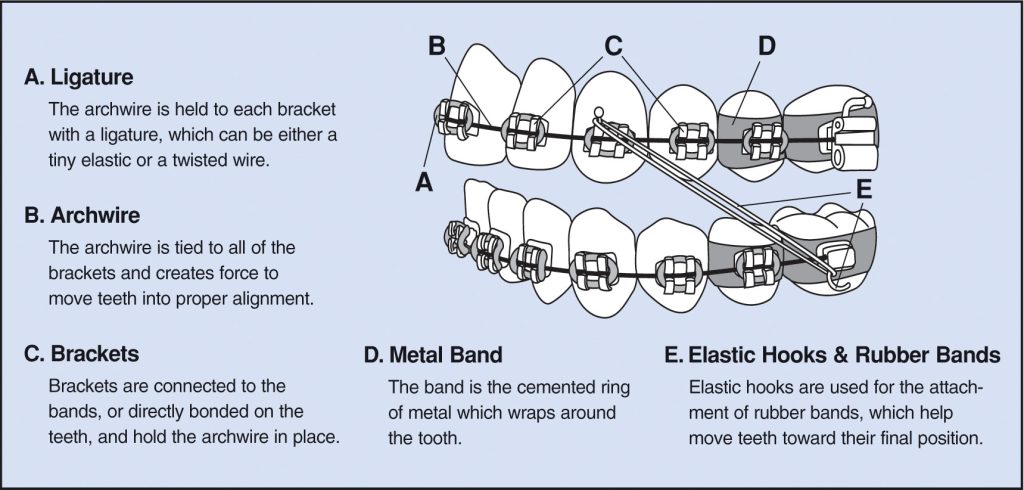
5. Maintenance and Care Tips for Orthodontic Fixed Appliances
5.1 Oral Hygiene Practices
Maintaining good oral hygiene is crucial when wearing orthodontic fixed appliances. It is important to brush your teeth after every meal to remove any food particles that may become trapped in the brackets or wires. Using a soft-bristled toothbrush and fluoride toothpaste is recommended. Flossing is also essential by using specialized floss threaders or interdental brushes to clean between the teeth and under the wires.
5.2 Dietary Restrictions
While undergoing orthodontic treatment, certain dietary restrictions may be necessary to prevent damage to the orthodontic appliances. It is advisable to avoid hard, sticky, or chewy foods that can dislodge brackets or bend wires. This includes foods such as popcorn, chewy candies, ice, and hard nuts. Opting for softer, easier-to-chew foods and cutting up fruits and vegetables into smaller pieces can help protect the appliances.
5.3 Regular Dental Check-ups
Regular dental check-ups are essential during orthodontic treatment. These appointments allow your dentist to monitor your oral health, provide professional cleaning, and ensure that your teeth and gums remain healthy throughout the treatment process. Your dentist can also offer guidance and make any necessary adjustments or repairs to your orthodontic appliances.
5.4 Avoiding Certain Habits
To ensure the success of orthodontic treatment, it is important to avoid certain habits that can interfere with the treatment progress. These habits include chewing on pen caps, biting nails, or opening packages with your teeth. Additionally, avoiding habits such as smoking or excessive consumption of sugary foods and drinks helps minimize the risk of tooth decay and staining.
5.5 Emergency Situations
While orthodontic fixed appliances are designed to be durable, there is a possibility of accidents or emergencies. If a bracket becomes loose or a wire breaks, it is important to contact your orthodontist as soon as possible for guidance. In the meantime, using orthodontic wax or silicone covers can help alleviate discomfort or prevent further damage.
6. Potential Discomfort and Side Effects
6.1 Soreness and Discomfort
It is normal to experience some soreness or discomfort after the initial placement of orthodontic fixed appliances and following subsequent adjustments. This discomfort typically subsides within a few days. Over-the-counter pain relievers and rinsing with warm saltwater can help alleviate the soreness.
6.2 Irritation and Ulcers
Some individuals may experience irritation or ulcers in the mouth due to the brackets or wires rubbing against the soft tissues. Applying orthodontic wax or using silicone covers can help reduce friction and alleviate discomfort. If the irritation persists or becomes severe, it is important to consult your orthodontist.
6.3 Difficulty Speaking and Eating
Adapting to orthodontic fixed appliances may initially result in difficulty speaking or eating. This is temporary and due to the presence of the appliances in your mouth. With practice, your speech and eating habits will adjust, and any difficulties will resolve.
6.4 Allergic Reactions
Although rare, some individuals may experience allergic reactions to the materials used in orthodontic appliances. If you notice any unusual symptoms, such as excessive swelling, itching, or difficulty breathing, it is crucial to seek immediate medical attention.
6.5 Dental Decay
Improper oral hygiene practices during orthodontic treatment can increase the risk of dental decay. It is essential to maintain a thorough oral hygiene routine, including proper brushing, flossing, and regular dental check-ups. Your orthodontist may provide additional guidance on specific products or techniques to ensure optimal oral health during treatment.
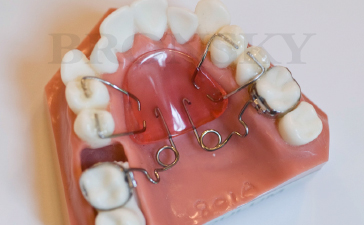
7. Financial Considerations and Insurance Coverage
7.1 Cost of Orthodontic Treatment
Orthodontic treatment costs vary depending on various factors, such as the complexity of the case, the type of orthodontic appliances used, and the duration of treatment. It is best to consult your orthodontist for an accurate estimate and to discuss available payment options.
7.2 Payment Options
Many orthodontic practices offer flexible payment plans to help make orthodontic treatment more affordable. These payment plans may allow you to spread the cost of treatment over an extended period, making it more manageable. It is important to discuss the available payment options with your orthodontist to find the solution that best suits your financial situation.
7.3 Insurance Coverage
Orthodontic treatment may be partially covered by dental insurance plans, depending on the policy and the specific treatment needed. Contact your insurance provider to understand the extent of coverage and any exclusions or limitations that may apply to orthodontic treatment.
7.4 Flexible Spending Accounts
Flexible Spending Accounts (FSAs) are another option that can help offset the cost of orthodontic treatment. FSAs allow you to set aside pre-tax dollars for qualified medical expenses, including orthodontic treatment. Consult your employer or financial advisor to determine if an FSA is available to you.
7.5 Tax Deductibility
In some cases, orthodontic treatment expenses may be tax-deductible. Consult with a tax professional to understand if you qualify for any tax deductions related to orthodontic treatment.
8. Potential Risks and Complications
8.1 Tooth and Gum Damage
While orthodontic fixed appliances are generally safe and effective, there is a minimal risk of tooth or gum damage. Rarely, brackets or wires may become dislodged, causing minor damage. Maintaining good oral hygiene and following your orthodontist’s instructions can help reduce the risk of these complications.
8.2 Root Resorption
Root resorption refers to the shortening or loss of tooth roots, which can occur during orthodontic treatment. This is a rare side effect, and the risk is minimal. However, your orthodontist will closely monitor your progress and take necessary precautions to minimize the risk of root resorption.
8.3 Temporomandibular Joint (TMJ) Disorder
Orthodontic treatment can influence the position and function of the temporomandibular joint (TMJ). In rare cases, orthodontic treatment may contribute to the development or exacerbation of TMJ disorders. However, the orthodontist will carefully evaluate your jaw function and occlusion during treatment to minimize this risk.
8.4 Relapse after Treatment
After orthodontic treatment, there is a risk of relapse, where the teeth may slowly revert to their original position. To minimize this risk, your orthodontist will provide you with retainers to wear after treatment. Consistently wearing your retainers as instructed will help maintain the achieved results and prevent relapse.
8.5 Allergic Reactions
Although rare, some individuals may experience allergic reactions to the materials used in orthodontic appliances. If you notice any unusual symptoms, such as excessive swelling, itching, or difficulty breathing, it is crucial to seek immediate medical attention.
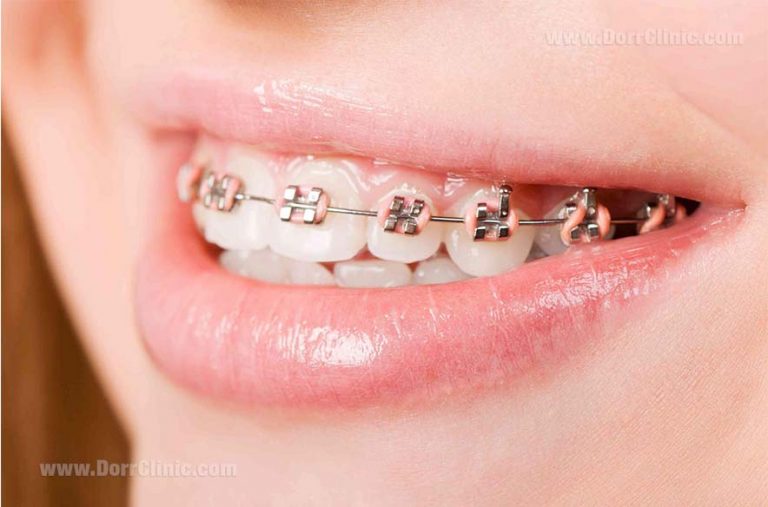
9. Orthodontic Aftercare
9.1 Retainers
After the completion of orthodontic treatment, the use of retainers is essential to maintain the achieved results. Retainers are custom-made appliances that hold the teeth in their new positions. Your orthodontist will provide specific instructions on how and when to wear your retainers.
9.2 Retention Period
The duration of the retention period varies for each individual, but it generally lasts for several months to a few years. Your orthodontist will determine the appropriate length of the retention phase based on your treatment progress and individual needs.
9.3 Regular Follow-ups
Regular follow-up appointments with your orthodontist are crucial during the retention phase. These appointments allow the orthodontist to monitor the stability of the treatment results and make any necessary adjustments to the retainers or treatment plan if needed.
9.4 Oral Health Maintenance
Maintaining good oral health is important even after completing orthodontic treatment. Continue to brush and floss regularly, and visit your dentist for routine check-ups and professional cleanings. Your orthodontist may recommend specialized oral hygiene products or techniques to ensure optimal oral health.
9.5 Long-Term Oral Care
Long-term oral care plays a vital role in preserving the results of orthodontic treatment. Follow your orthodontist’s instructions regarding retainer wear, dental visits, and oral hygiene practices. This will help ensure the long-term stability and longevity of your treatment outcomes.
10. Frequently Asked Questions (FAQs)
10.1 Are orthodontic fixed appliances painful?
Orthodontic fixed appliances may cause some soreness or discomfort initially and following adjustments. However, this discomfort is generally mild and can be managed with over-the-counter pain relievers. Any significant pain or discomfort should be reported to your orthodontist.
10.2 How long do orthodontic fixed appliances take to work?
The duration of orthodontic treatment varies depending on the individual case. On average, treatment with fixed appliances ranges from 12 to 24 months. However, some cases may require a shorter or longer treatment period. Your orthodontist will provide you with an estimated timeline based on your specific situation during the initial consultation.
10.3 Can orthodontic fixed appliances be removed?
Orthodontic fixed appliances cannot be removed by the patient. They must be professionally removed by the orthodontist once the treatment goals have been achieved. After appliance removal, retainers are typically provided to maintain the results.
10.4 Will orthodontic treatment affect speech?
While it is common to experience a slight adjustment period, orthodontic treatment should not have a significant impact on speech. Any speech changes are typically temporary and quickly adapt as you become accustomed to the presence of the appliances.
10.5 How often should adjustments be made?
The frequency of adjustments during orthodontic treatment varies depending on the individual case and treatment plan. On average, adjustments are typically scheduled every 4 to 8 weeks. Your orthodontist will establish a customized appointment schedule based on your specific needs and treatment progress.

